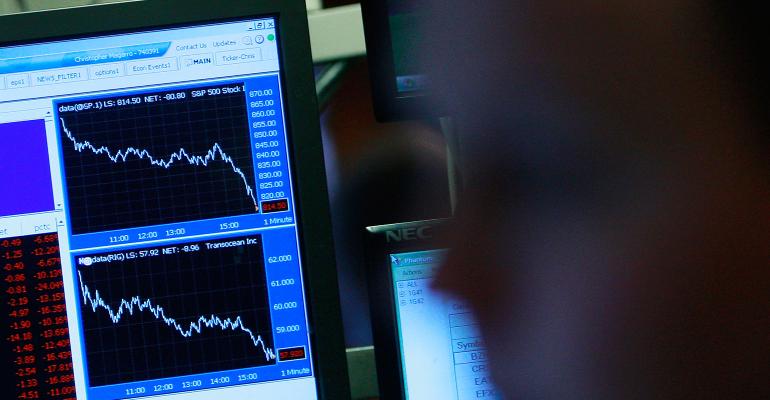By Randy Swan
The combination of slowing global growth, geopolitical instability and gyrating markets should signal to every financial advisor that another recession is not far off. In fact, we could already be unknowingly entering the eye of the storm.
Interestingly, however, the inevitability of the next market downturn is not the biggest problem that most clients face. The greatest challenge at hand is that the average portfolio—one made up of 60% stocks and 40% bonds—is not built to weather new market realities.
While bonds have performed remarkably well through thick and thin over the past few decades, they cannot be counted on to provide the same type of downside protection and income generation going forward. The tight-spread, low-yield environment intensifying this month appears here to stay.
It is a major red flag that the yields on the 10-year U.S. Treasury note and the two-year U.S. Treasury note have inverted. In addition to the fact that many large institutions apparently have bearish outlooks for the near term and intermediate term, it is alarming that a 2% yield is considered palatable. The downward slide for yields shows no signs of reversing.
The long-run limitations of fixed income are also continuing to manifest in the corporate bond market, where investment grade and high-yield debt continues to come with relatively paltry coupons and weak protections. The vast majority of investors holding bonds in the era of “covenant lite” are already not being adequately compensated for risk. When economic turbulence sets in, increased distressed and new defaults are likely to inflict permanent pain on a portfolio via steep principal haircuts.
Taken together, this month’s glimpse of volatile equity markets and cratering yields should be considered a preview for what is coming. It is highly unlikely that any governmental action, including further interest rate cuts, will be able to stall volatility or offset waning corporate investment across the country. Keep in mind, markets are already shrugging off July’s rate cut.
Advisors across the U.S. should begin explaining to their clients that the central government and Federal Reserve are not in a strong position to blunt the next recession. With the national debt nearing $23 trillion and annual deficit levels soaring, Congress will have little ability to unleash artificial stimulus via more spending or tax cuts. Central bankers are equally constrained by a bloated balance sheet and already-low interest rates.
All of this raises an important question: What is the best way to position a portfolio for tough days ahead?
Any advisor looking to help clients preserve and grow capital at a meaningful long-term rate needs to leave behind the strict balanced portfolio playbook.
The 40% of a portfolio that has been made up of fixed income securities needs to be rebuilt to include new long-term investment solutions. While some accredited investors can dive into alternative assets, and others may pursue safety via cash or precious metals during a crisis, those are not suitable paths for most clients thinking about how to retire comfortably or reach individual wealth goals.
One increasingly viable solution is a hedged equity strategy, which aims to balance capital preservation goals while seeking to capture stock market appreciation over a full market cycle. An allocation to this type of strategy—which is distinct from a hedge fund product—may be the most prudent replacement for underperforming bond allocations. Many investors do not realize that they can retain considerable equity exposure during a bear market with a strategy that seeks to hedge downside risk and generate opportunistic income through the use of options.
For savvy advisors, the final days of our 10-year-old bull market represent a once-in-a-career opportunity to bring new advice and solutions to clients. Relying on the same portfolio construction blueprint is a recipe for disaster given the economic and policy dynamics taking shape around the world. Now is the time to think bigger and bolder.
Randy Swan is the founder and lead portfolio manager at Swan Global Investments, a $4 billion asset management firm.





